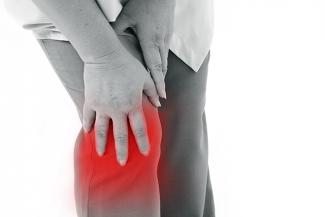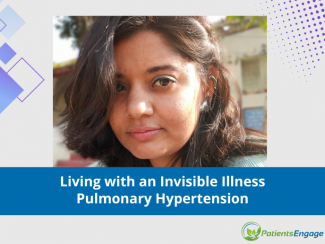
Kajal* had been active and careful about her lifestyle. When she experienced weight loss and started having knee pain she went through a series of tests and specialist doctors. Not satisfied with the solutions presented, she pro-actively looked at various complementary therapies to find solutions and made some surprising findings.
I’ve always been thin and active. When I hit thirty, alerted by my parents’ health problems, I switched to a healthy lifestyle. I ate wholegrain foods, healthy fats, and lots of vegetables. I avoided fried food, sweets, and junk food. Daily activities included brisk morning and evening walks.
I turned sixty last year. In spite of my careful lifestyle, I have some problems my parents had (osteoporosis, hypothyroidism, dyslipidemia, hypertension, prediabetes). Regular medication and continued lifestyle precautions keep them under satisfactory control. So, during my medical check-up last year, I was more concerned about two newer problems.
- I had lost several kilos over the past year. My BMI dropped to 15.6, clearly underweight.
- I had a painful spot on the inner sides of my knees. It hurt when pressed, and sometimes just on its own. The pain was occasional and moderate. It did not affect walking or climbing stairs. But I could not sit cross-legged or on my haunches. As far as I knew, this was the lingering after-effect of intense pain caused earlier by a faulty pair of shoes.
Series of Tests and Consultations
I did my usual test reports for my diagnosed conditions. I also did some tests for general health - total blood counts, Vitamin B12, Vitamin D, and electrolytes. The only reading that felt odd was Vitamin D. At 77.2 nmol/L (30.9 nanograms), this was just above the "insufficient range" as per lab norms.
I then began multiple consultations. I consulted three specialists (one endocrinologist, two orthopaedists) and three other health professionals (GP, physiotherapist, Ayurvedic doctor). All six were senior, reputed, and recommended by friends.
The review of my existing medical conditions was satisfactory. What I share here are my experiences related to the two newer challenges.
The confusing opinions of specialists
My endocrinologist told me my Vitamin D level was good. He said such weight loss was no problem. He gave many examples of underweight mid-nineties persons, including his mother. If really worried, I should consult a GP.
Both orthopaedists examined my knees at length. The first orthopaedist said I was not arthritic (I was “very well maintained”). He dismissed the painful knee spot as “nothing wrong”. When I said, then why does it pain, he advised an MRI. This showed a tear in the medial meniscus, which that orthopaedist called a “partial tear”. The second orthopaedist labelled me arthritic and said I would need total knee replacement in both knees in a few years.
On the main points, though, both orthopaedists said the same thing. They said orthoscopy was the only way to solve the pain problem. It was a simple procedure. They mentioned no rehab time or effort and dismissed questions about possible harm due to any removal during the orthoscopy. Both agreed it was “elective” and not doing it will not harm me, but both expected me to be back soon. They gave no exercises. No advice on posture. I could do nothing to avoid more damage.
I asked the second orthopaedist a few more questions. He said my Vitamin D level didn’t indicate need for supplementation. I specifically asked about knee exercises and he looked surprised. “Well, if you believe in that sort of thing, ask a physiotherapist.”
Many things bothered me about these visits. Google’s input on meniscus tears and was confusing, but indicated that it really depended on the surgeon, and neither surgeon had won my confidence. One relatively minor point was my Vitamin D level. I spent ten minutes on Google and then contacted the second orthopaedist again. This time I pointed out that my result was in nmol/L. He promptly prescribed supplementation.
It was unsettling to hear that decline as unavoidable and surgery was the only option. The looming inevitability of a double knee replacement didn’t help. I didn’t think I could face another orthopaedist. So, I also consulted a GP, physiotherapist and Ayurvedic doctor for my knee.
Advice from these three was different. All three said surgery may not help, but I should not worry. They asked about my current exercise. At that time, I was walking around 10-12 km a day, running 2-3 km a week, and doing other exercises (balance, stretches, some hand weights). All three told me to continue my routine. The physiotherapist added some exercises for core and legs. The Ayurvedic doctor gave advice on posture and diet, prescribed some oils, and told me to focus on strengthening my legs.
How could I gain weight?
I also asked the GP about my weight loss. After examining me and checking my reports, she said there seemed nothing wrong medically. She suggested increasing my food.
The weight loss problem seemed less alarming than the knees, so I began exploring ways to gain weight.
Typical health advice is for losing weight. The few articles on weight gain focused increasing food intake, but sticking to healthy foods. Some suggested eating richer, nutrition-packed foods. I was already eating healthy. I needed to improve my appetite to eat more. And any “richer foods” would have to match my other diet considerations. These were low salt (thanks to hypertension), moderate meal size and need to avoid excess sweets (prediabetes) and moderate oils(dyslipidemia).
Luckily, I chanced upon Ayurveda, a system with enough advice for frail builds. I read authoritative books to see what was recommended for my profile (“vata” personality, “vata” imbalance).
Was I over-exercising?
One advice was to avoid over-exercising. Looking back, I realized that my exercise had increased over the past year. Was I “over-exercising?” I cut out running for a month. My appetite improved within a week. My energy levels improved. This surprised me because I hadn’t realized I was low on energy. Some weight gain was visible in a month.
Encouraged, I also adopted some Ayurvedic suggestions that didn’t violate the standard health guidelines. These included ensuring regular meal timings, and eating warm, moist and oily foods instead of cold, dry foods. For me this meant things like switching snacks from healthy crackers to fresh hot upma and opting for cooked veggies rather than raw salads. I also decided to avoid my occasional ice-cream, milkshake, or cold drink.
Chocolate, apparently, was a no-no for me. I love dark chocolate and took a few squares daily. But I went cold-turkey on it. The craving took six weeks to go. But my sleep improved and overall anxiety reduced. Dark chocolate may have health benefits, but I was better off without ii.
My improved well being allowed me to think about my knees again.
People exercise for different reasons. My objective was fitness, mobility, flexibility, balance, and stronger knees and legs. I was still continuing my old routine but I had shelved the physiotherapist exercises because I found them uncomfortable.
Exploring various systems
My searches led me to many systems. Yoga was ruled out because available instructors were not satisfactory. Some students had even become worse—increase in pain, breathlessness, increase in BP.
Taichi was a major find. Taichi is recommended by some major arthritis foundations for balance, mobility and pain relief even with severe arthritis. It is considered safe. I didn’t think my orthopaedists cared so I didn’t consult them, though it is generally advisable to check new exercises with doctors. I bought an online course that seemed well-recommended, (“Tai Chi for Arthritis” by Dr. Paul Lam) and began learning in a cautious, self-paced way. My improved balance and range of motion was visible within a few weeks. Taichi was also very relaxing and enjoyable, like “me time.”
Learning is ongoing. For some exercises the physiotherapist had briefly taught, I found detailed Pilates explanations. They focused on correct form and explained common mistakes. This better understanding enabled me to resume some exercises. Articles by Moshe Feldenkrais made me notice how to make some movements easier.
More energy, Acceptable weight and Better Approach to Pain
Nine months into my efforts, I have more energy. My weight is acceptable. My exercise combines enjoyable activities for posture, flexibility and mild aerobic and strength benefits. I have a mindfulness approach to “flow” with any pain if it happens, and this reduces my worry and anxiety. The approach involves approaching pain with curiosity and observing how it changes and flows with time, rather than feeling resentment or fear when it happens.
And I continue to look for additional ideas. For example, I am looking at slow jogging and dancing as possible ways for enjoyable aerobics. I don’t feel need for surgery yet.
Key lessons
Slowing down for well-being may not suit everyone. Each of us has to explore and adopt what works. But some key lessons may be generally useful.
- Doctors help us understand our medical situation and get appropriate treatment (medicines, surgery). But doctors are not a one-stop source for improving wellness. They may not even consider lifestyle aspects. Worse, some doctors convey extreme scenarios as inevitable and unavoidable. This can be dejecting.
- Even experts can make elementary mistakes. Staying alert and asking questions helps us get better answers and also assess our comfort with the doctor.
- Following standard health advice may not be enough. We may need to explore options within this framework to improve our situation.
I feel that our body’s wellbeing is important to experience the world better. Understanding its needs and finding suitable ways for our well-being is a worthwhile investment.
References: In case you are interested in doing your own investigation and experimentation: Please make sure you do your own cautious research and are very careful in case you decide to adopt any advice, including consulting your doctor.
For Ayurveda, it would be better to talk to a doctor for basic concepts and read authoritative books patiently. Concepts I found useful were: prakriti and vikriti, approach to balance the doshas, qualities of food such as taste (sweet, sour, salty, pungent, bitter or astringent) and other attributes (heavy or light, hot- or cold-producing, oily or dry, liquid or solid) and their relationship with doshas. Try changes if this appeals and you can think of small, safe steps to see if something helps.
Tai Chi: An overview of the program I bought can be seen here: https://taichiforhealthinstitute.org/why-tai-chi-for-arthritis/ and an introductory lesson can be seen at Youtube video. This program is also referred to in Harvard Health excerpt. Harvard Health also has its own videos on Taichi on Youtube
For mindfulness for pain: Get some basic explanations at https://psychcentral.com/lib/using-mindfulness-to-approach-chronic-pain/, https://www.psychologytoday.com/us/blog/mindfulness-in-frantic-world/201501/can-mindfulness-meditation-really-reduce-pain-and-suffering, https://www.health.harvard.edu/pain/body-scan-for-pain and a study here at https://www.ncbi.nlm.nih.gov/pmc/articles/PMC5368208/. Look for detailed explanations if you are interested.
* name changed on request






